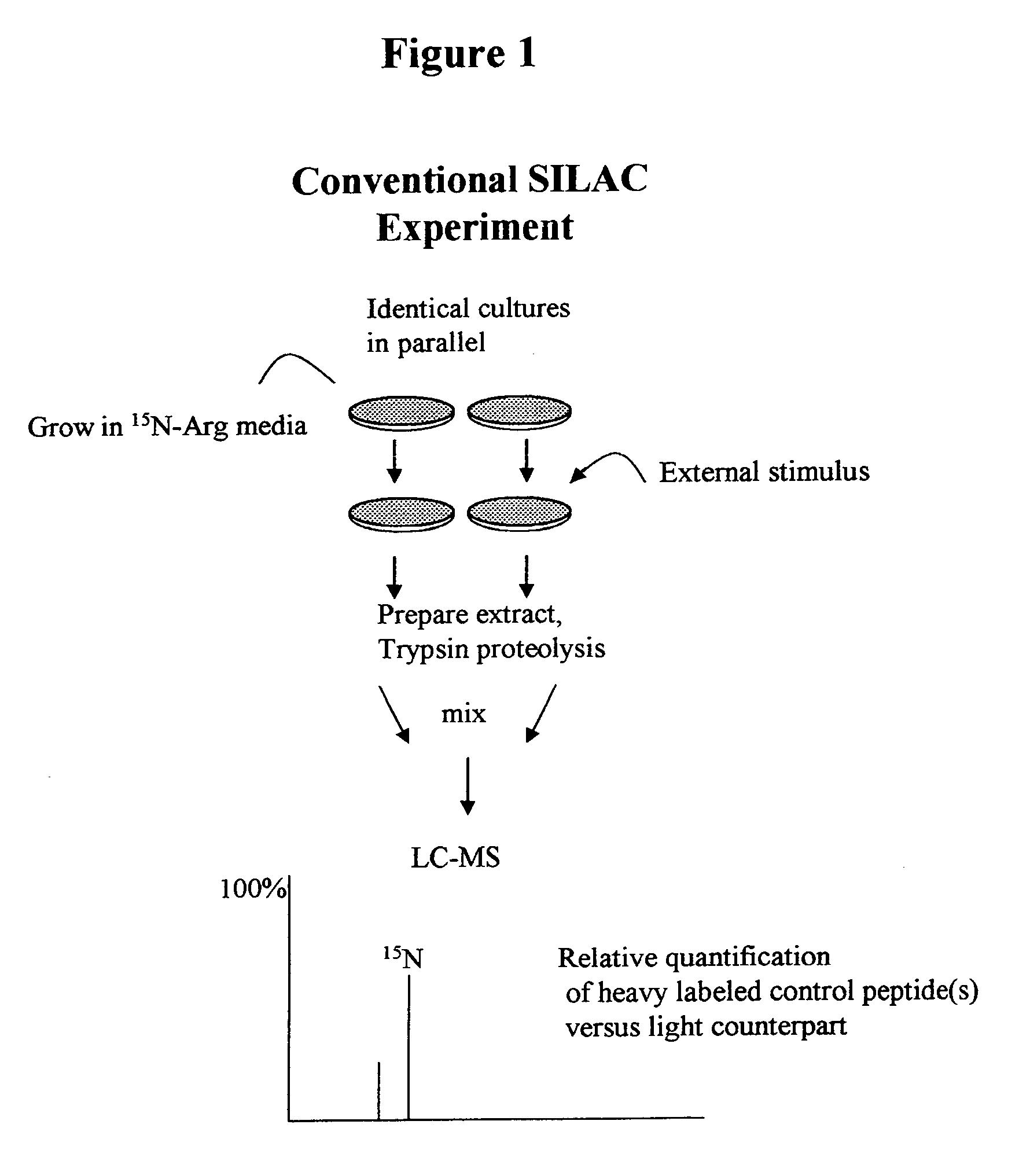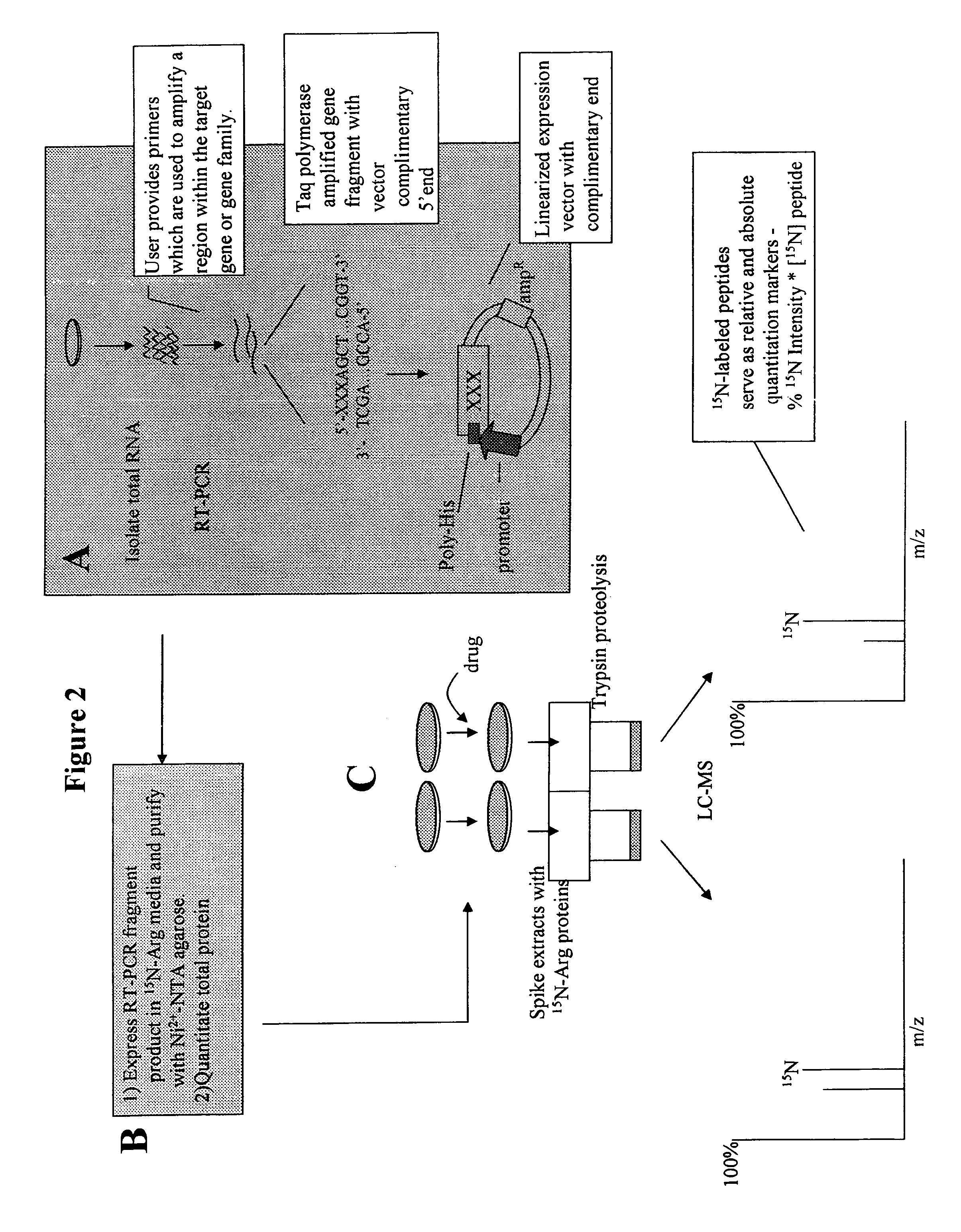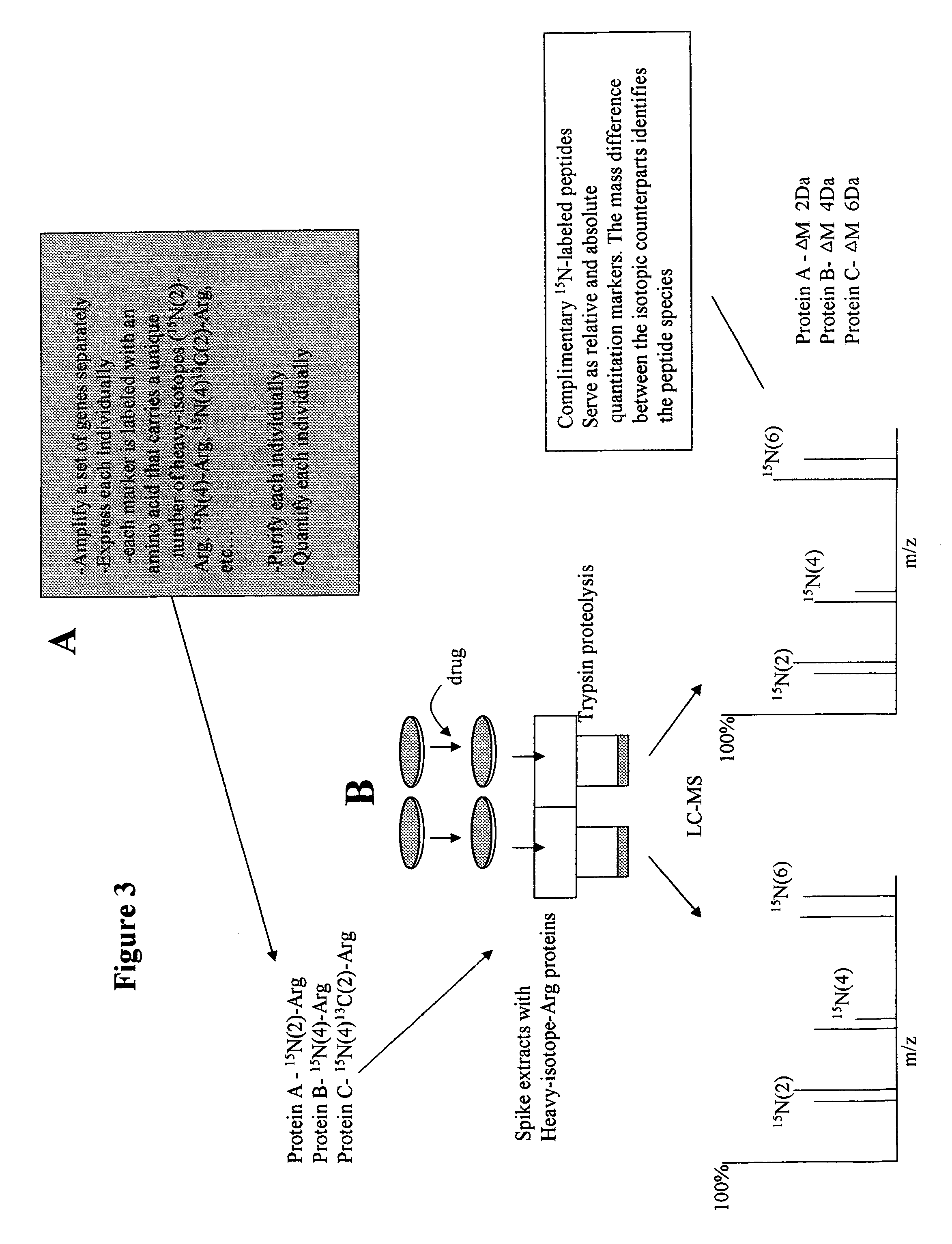Isotopically-labeled proteome standards
a biomolecule standard and isotopically labeled technology, applied in the field of mass spectrometry analysis of proteins, can solve the problems of unreliable comparative quantification using mass spectrometry, inability to achieve absolute concentrations using these methods, and inability to achieve absolute concentrations
- Summary
- Abstract
- Description
- Claims
- Application Information
AI Technical Summary
Benefits of technology
Problems solved by technology
Method used
Image
Examples
example 1
[0140]An example of a method of quantitation of a biomolecule in accordance with the present invention is shown in FIG. 2. According to these embodiments, the method includes selecting a biomolecule of interest, for example, a protein, or protein family, a lipid, a carbohydrate, or combination thereof In FIG. 2, the biomolecule is a protein.
[0141]After the protein of interest is selected, a copy of the protein is made into a standard. Panel A describes the method for isolation of genes of interest and subcloning. According to the embodiments depicted in FIG. 2, the user selects a gene encoding the sequence of the protein of interest. Primers may be designed that target to a specific region of the sequence that is unique so that only a single gene fragment is amplified. These primers may then be used to amplify a gene fragment from a cDNA library.
[0142]The polymerase chosen for this amplification reaction will depend on the subcloning scheme. By way of non-limiting example, a polymer...
example 2
[0150]According to this example, a protein standard is made as in Example 1. In this example, a known amount of the protein standard, although not quantified is added to at least two of the cell pools. Relative concentrations between pools with known amounts of standards may thus be obtained. While this example does not provide absolute concentrations for biomolecules, this example still has the advantages that parallel processing of samples is not required as with conventional SILAC and any sample source, not just cultured cells can be used to obtain data.
[0151]Following proteolysis, the lysate components are processed for MS. For example, they may be separated by chromatography and fed to MS. In this example, the concentration of the light-isotope isoform is determined by comparing the relative intensity to its heavy-isotope isoform. Because the amount of the heavy-isotope isoform is known in each of the pools, the relative concentrations of the light-isotope isoform may be determ...
example 3
[0152]Further aspects of the present invention feature analyzing the relative abundance of multiple biomolecules, for example, proteins, simultaneously. In this example, there are for example several methods of generating multiple recombinantly expressed heavy-isotope labeled reference proteins.
[0153]For example, the practitioner may design multiple primers to multiple unrelated genes and amplify, subclone, and express these simultaneously. The final purified protein sample will contain a pool of multiple proteins in an unknown ratio. A quantitative amount of this pool may be spiked into the challenged cell lysates and the control cell lysate, and the relative abundance of proteins may be determined as discussed previously with respect to panel C of FIG. 2. In this example, only the relative abundance of each protein may be determined. However, the results of multiple experiments may be compared if a quantitative amount of the same reference protein pool was used.
[0154]In a second m...
PUM
| Property | Measurement | Unit |
|---|---|---|
| mass | aaaaa | aaaaa |
| mass spectrometry | aaaaa | aaaaa |
| affinity | aaaaa | aaaaa |
Abstract
Description
Claims
Application Information
 Login to View More
Login to View More - R&D
- Intellectual Property
- Life Sciences
- Materials
- Tech Scout
- Unparalleled Data Quality
- Higher Quality Content
- 60% Fewer Hallucinations
Browse by: Latest US Patents, China's latest patents, Technical Efficacy Thesaurus, Application Domain, Technology Topic, Popular Technical Reports.
© 2025 PatSnap. All rights reserved.Legal|Privacy policy|Modern Slavery Act Transparency Statement|Sitemap|About US| Contact US: help@patsnap.com



